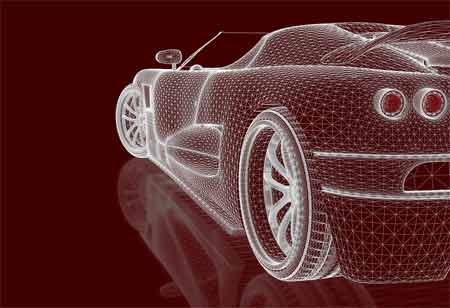Thank you for Subscribing to Auto Business Outlook Weekly Brief
Unveiling the Secrets of Automotive Paints
Automotive paint selection impacts appearance and durability. Options like enamel, acrylic enamel, and urethane offer varying benefits and drawbacks. Factors such as vehicle type, usage, and environment influence the best choice.

By
Auto Business Outlook | Friday, January 10, 2025
Stay ahead of the industry with exclusive feature stories on the top companies, expert insights and the latest news delivered straight to your inbox. Subscribe today.

FREMONT, CA: In automotive painting, the choice of paint used by manufacturers plays a crucial role in determining the final look and longevity of a vehicle’s finish. Familiarity with the various types of automotive paints can assist car manufacturers in making well-informed decisions, whether they are vehicle owners aiming to refresh their car’s appearance, prospective buyers exploring options, or auto body repair professionals seeking the best solutions.
Numerous factors determine the appropriateness of automotive paint, including desired finish, durability, and budget. The following is an overview of the most prevalent types of automotive paint, including their essential features, benefits, and potential drawbacks.
Enamel paint: This is known for its hard finish and high durability, making it resistant to UV radiation and environmental deterioration. It's a solid choice for car owners looking for long-term protection.
Some of the advantages of enamel paint are:
- The finish is hard and resilient, withstanding ordinary wear and tear.
- Excellent weather resistance ensures that the paint maintains its attractiveness over time.
The drawbacks include:
- Requires a more complex application process, which demands expert assistance to attain the best outcomes.
- Longer drying time than other paints, which can prolong the painting process.
Acrylic enamel: Acrylic enamel is well-known for its high gloss appearance and low cost. It's a popular choice for individuals searching for a low-cost paint update.
The advantages of acrylic enamel include:
- Provides an immediate and obvious gloss.
- Reasonably priced so that most car owners can afford it.
However, the drawbacks are:
- Other paint kinds may be less durable, particularly in harsh environments.
- Typically carries a shorter warranty.
Urethane paint: Urethane paint is a flexible alternative recognized for its chip resistance and overall longevity. It is widely utilized in modern vehicles and multi-stage paint procedures.
Its benefits are noted below:
- Provides a glossy, professional look that many car owners desire.
- Frequently comes with a lengthier warranty.
- It is extremely durable and adaptable, making it ideal for a wide range of vehicles.
The disadvantages of these include:
To guarantee a smooth, even finish, expert application might be necessary.
Because of the hazardous fumes produced during the procedure, this application necessitates stringent safety precautions.
Some of the essential factors for choosing the right automotive paint are noted below:
Vehicle type: Different vehicles may benefit from different paint types based on their intended usage and environmental exposure. For example, off-road vehicles may require more durable, chip-resistant paints such as urethane, yet a luxury car may benefit from a high-gloss, premium base, and clear coat for an eye-catching finish.
Environment and usage: The temperature and driving conditions that the vehicle may encounter are crucial considerations. If individuals reside in a harsh winter climate, road salt will quickly wear down certain types of paint, necessitating a more lasting solution such as urethane or a clear coat finish. In contrast, vehicles in sunny climates may require UV-resistant coatings to avoid fading.






